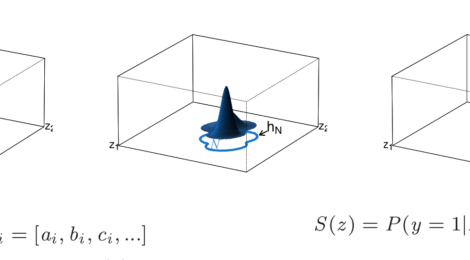
Range bagging: a new method for ecological niche modeling from presence-only data
Ecological niche modeling concerns the task of identifying the environmental conditions under which species persist. Niche modeling — and the mapping of species distributions it is usually used for — are often complicated by the presence of extraneous information, awkward sampling, and complex interactions. Range bagging is a new method that aims to simplify ecological niche modeling by focusing on the niche itself — viewed as a range of habitable environments. Bagging is an ensemble learning approach that renders the resulting model more stable than a single highly tuned model. In this case, it also solves the complexity problem one encounters when trying to identify an n-dimensional environmental (or convex hull) for large n. See here for the details. R code is available here.
- Drake, J.M. Range bagging: a new method for ecological niche modeling from presence-only data. Journal of the Royal Society Interface. [online] [pdf]
This work was supported by a grant from the US National Oceanic and Atmospheric Administration (agreement no. NA10NOS4780218)





